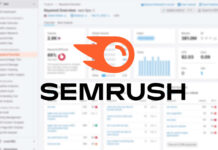Black holes have remained one of the most fascinating and perplexing mysteries of the universe for nearly a century. Scientists are still grappling with the concept and implications of these enigmatic entities, despite significant advancements in our understanding over the years.
The Origins of Black Holes
The exploration of black holes dates back to the early 20th century, with notable figures like Albert Einstein and J. Robert Oppenheimer contributing to the field. In 1916, Einstein first predicted the existence of black holes through his general theory of relativity. However, it was not until Oppenheimer and Snyder’s groundbreaking work in 1936 that the modern understanding of black holes began to take shape.
The Oppenheimer-Snyder Model
The Oppenheimer-Snyder model, introduced 85 years ago, provided a framework for how black holes could form based on Einstein’s field equations. Professor Nils Andersson, an expert in astrophysics and black holes, emphasized the significance of this model in shaping our understanding of these cosmic enigmas. Despite its groundbreaking nature, Andersson noted that the true impact of the Oppenheimer-Snyder model was not fully realized until the resurgence of interest in general relativity in the 1960s.
Evolution of Black Hole Research
The term “black hole” was not coined until 1967 by American astronomer John Wheeler, decades after Einstein and Oppenheimer’s initial predictions. Subsequent discoveries, such as Nasa’s confirmation of x-ray emissions from a mysterious dark object in the Milky Way in 1964, further fueled scientific interest in black holes. These early findings laid the groundwork for future research and exploration into these enigmatic phenomena.
The First Glimpse of a Black Hole
In 2019, the Event Horizon Telescope captured the first-ever image of a black hole in the center of galaxy M87, marking a significant milestone in astrophysical research. This groundbreaking image provided scientists with valuable insights into the nature of black holes and opened up new avenues of exploration. Subsequent images, like the polarized light image of the same black hole in 2021, have deepened our understanding of these cosmic entities.
Unraveling the Mysteries of Black Holes
Despite these advancements, many mysteries surrounding black holes remain unresolved. Professor Andersson highlighted the importance of precision observations, particularly through gravitational wave astronomy, in shedding light on the formation and evolution of black holes. The ongoing research and technological advancements in this field hold the promise of uncovering more secrets of these enigmatic cosmic phenomena.
Fun Facts About Black Holes
In addition to their scientific significance, black holes also capture the imagination with their intriguing and often bizarre properties. Theories such as the “spaghettification” of objects falling into black holes and the instantaneous burning due to quantum effects add to the mystique of these cosmic entities. The sheer number of black holes in the Milky Way alone, estimated to be between 10 million to one billion, underscores their prevalence in the universe.
Looking to the Future
As scientists continue to unravel the mysteries of black holes, the future of black hole research holds great promise. Advanced technologies, such as next-generation gravitational wave interferometers, offer new opportunities to study black hole collisions and further our understanding of these enigmatic entities. The quest to unlock the secrets of black holes remains a captivating and essential pursuit in the realm of astrophysics.
In Conclusion
The enigma of black holes continues to captivate scientists and enthusiasts alike, driving forward the frontiers of astrophysical research. From the pioneering work of Einstein and Oppenheimer to the recent breakthroughs in imaging and observation, the journey to understand these cosmic mysteries is an ongoing and exciting endeavor. As we delve deeper into the complexities of black holes, we inch closer to unlocking the secrets of the universe and expanding our knowledge of the cosmos.












